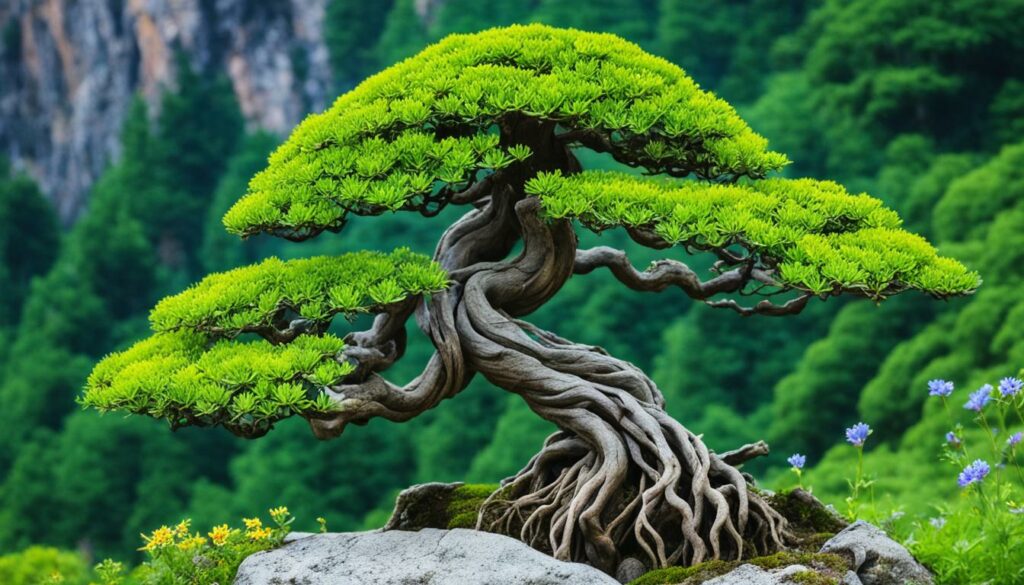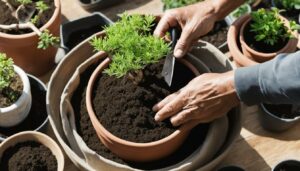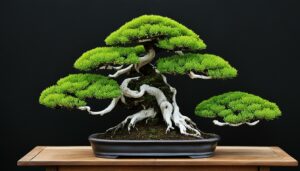If you’re looking to cultivate a unique and beautiful bonsai collection, consider collecting trees from nature. Incorporating wild bonsai trees into your collection adds a touch of authenticity and natural appeal to your display.
The process of collecting trees from nature, also known as yamadori, requires patience, skill, and knowledge of ethical considerations. However, the effort is worth it to see your bonsai thrive and evolve with time.
Key Takeaways
- Collecting wild bonsai trees, known as yamadori, is a unique way to add natural appeal to your bonsai collection.
- Cultivating bonsai trees requires patience, skill, and understanding of ethical considerations.
- Selecting the right tree is important for successful bonsai cultivation.
- Tools and techniques for safely collecting and acclimating trees are essential.
- Proper ongoing care and training are necessary for maintaining a healthy and beautiful bonsai collection.
The Art of Bonsai Cultivation
Creating and maintaining bonsai trees is a meticulous art form that requires skill, patience, and attention to detail. Bonsai cultivation involves shaping and training miniature trees to achieve the desired form and aesthetic appeal. It is a practice that has been passed down for centuries and continues to captivate enthusiasts around the world.
There are several different techniques and styles used in bonsai cultivation. One of the most common techniques is pruning, which involves cutting back branches and roots to control the growth of the tree. Wiring is another popular technique used to shape and train branches into specific positions. In addition, many bonsai artists use tools such as scissors and shears to refine the shape and form of the tree.
The selection of the right tree for bonsai cultivation is crucial to its success. The type of tree, its age, and its overall health must be considered when selecting trees for bonsai cultivation. Many bonsai enthusiasts collect trees from nature, but it is also possible to purchase trees from nurseries or start the process from seeds or cuttings.
Natural bonsai trees, collected from nature, offer a unique and fascinating addition to any collection.
“In bonsai cultivation, it is essential to cultivate both the tree and the artist. Bonsai is not just about shaping a tree into a miniature form. It is about the journey of growth and refinement, both for the tree and for the artist’s skill.”
Bonsai cultivation is both a science and an art form that requires careful attention to detail and patience. The rewards, however, are well worth the time and effort put into the practice. By creating and maintaining bonsai trees, you can bring the beauty and serenity of nature into your home or outdoor space, and enjoy a peaceful connection with the natural world.
Understanding Yamadori
Yamadori is the practice of collecting bonsai trees from their natural habitat, which is quite different from cultivating them through traditional methods. In Japan, yamadori means “collecting material from the mountains,” and it involves going to the mountains or wilderness areas in search of wild bonsai.
Wild bonsai trees grown in their natural environment have a unique and unparalleled charm that can’t be replicated through cultivation. Collecting a bonsai tree in the wild allows you to witness and appreciate its singular beauty and strength. Besides, through yamadori, you can own a piece of land and history, a practice that has been passed down from generation to generation.
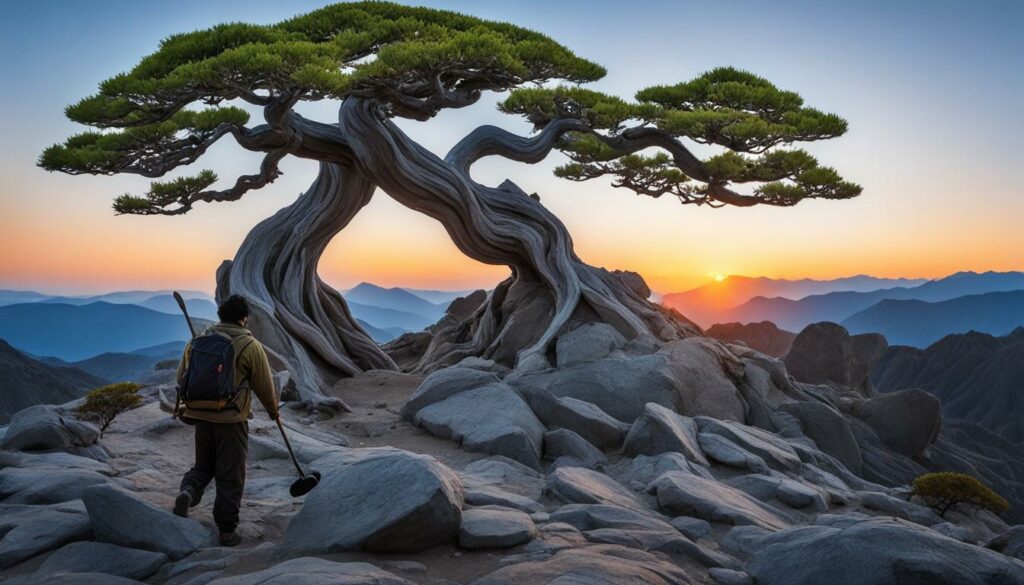
The Ethics of Yamadori
Responsible yamadori is always mindful of the tree’s root structure, the surrounding environment, and the impact that tree collection has on the ecosystem. It involves taking precautions, such as minimizing damage to the environment, leaving no trace, and adhering to local rules and regulations.
“The art of bonsai is one that requires dedication, patience, and a commitment to ethical practices. Collecting bonsai trees from the wild is a great privilege, and we must undertake this responsibility with the utmost care.”
Considerations for Collecting Trees
Collectors should take into account the tree species, age, and health before collecting them. Wild bonsai trees require specific care, taking into account their natural growth conditions. Therefore, they must be located in areas that match their growth requirements after collection. Besides, trees that have been exposed to strong winds, floods, or extreme weather conditions may have an exceptionally robust root system, making them harder to extract without damaging the tree.
The Beauty of Yamadori in Bonsai Collection
Yamadori trees showcase a natural and distinctive look that generally can’t be found in trees grown from seeds. The unique shape and character of wild bonsai are attributed to the seasons, climate, and other factors that affect growth in the natural habitat. Therefore, introducing yamadori into your collection ensures that you have a truly authentic artwork, a one-of-a-kind masterpiece that highlights nature’s beauty and diversity.
Selecting the Right Tree
When it comes to bonsai cultivation, selecting the right tree is paramount. Your first instinct may be to choose a tree that catches your eye, but there are several key factors to consider.
Characteristics of a Suitable Bonsai Tree
A suitable bonsai tree should have:
- A thick, tapered trunk
- Strong and balanced branches
- Small leaves, proportional to the tree’s size
- Interesting bark and roots
- Excellent overall health and vigor
Keep in mind that the best trees are often found in their natural environment. When selecting a tree, look for one that has already experienced a harsh climate and has developed resistance. Trees that have survived in challenging conditions are more likely to thrive as bonsai.
Another option is to search for trees specifically harvested for bonsai. These trees are cultivated for their unique and desirable characteristics that make them ideal for the art form.
Where to Find Bonsai-Worthy Trees
The best places to find bonsai-worthy trees include:
- Forests, where natural bonsai trees are often found
- Mountains, where yamadori trees can be collected
- Parks and gardens, where cultivated trees may be available for purchase
Take your time selecting a tree and be patient in your search. Remember that as the caretaker of a bonsai tree, it is your responsibility to ensure its long-term health and viability.
Finding Bonsai-Worthy Trees in Nature
As an enthusiast of tree collection, you understand the charm of cultivating wild and natural bonsai. However, finding the right trees to add to your collection requires knowledge and careful observation. Different environments support various tree species, and you need to understand the types of ecosystems that sustain bonsai-worthy trees.
Wild bonsai trees grow in diverse habitats like mountains, forests, and riverbanks, and understanding their characteristics will help you determine which trees are suitable for your collection. Consider the following when searching:
- The age and size of the tree
- The growth pattern and aesthetics of the tree
- The shape and formation of the trunk and branches
- The tree’s general health and vitality
When exploring diverse ecosystems, you can find yamadori trees or wild bonsai in their natural habitat. These are valuable trees for your collection, as they have unique features that enhance the aesthetic beauty of your bonsai.
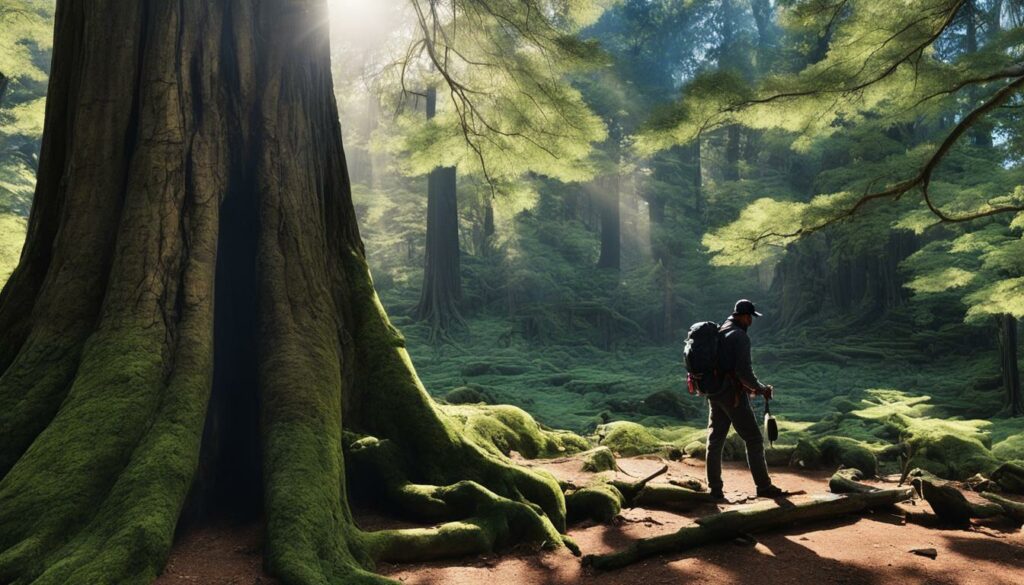
| Ecosystem | Tree species | Characteristics |
|---|---|---|
| Mountain ranges | Juniperus Chinensis | Twisted trunk and exposed roots |
| Forest | Quercus Suber | Small and delicate leaves, powerful roots |
| Riverbanks | Ficus Microcarpa | Graceful curves and thick branching |
Your exploration for wild bonsai can be an exciting venture. However, it is important to respect the environment and follow ethical guidelines while collecting trees. Consider areas away from populated regions and ensure no harm is caused to the tree or surrounding ecosystems during collection.
As you find wild and natural bonsai trees that inspire you, you can add them to your tree collection, enriching your bonsai cultivation journey.
The Ethics of Collecting Wild Bonsai Trees
When collecting bonsai trees from nature, you must always consider the ethical implications of your actions to preserve the natural ecosystem. As a responsible collector, you must adhere to guidelines for sustainable tree harvesting and ensure that you don’t cause irreversible harm to the environment.
Here are some tips to follow when collecting wild bonsai:
- Identify which trees are suitable for bonsai cultivation before you collect them.
- Avoid removing trees from protected areas or other sensitive ecosystems.
- Limit the number of trees you collect and choose young trees that have a higher chance of survival.
- Use ethical collection techniques, such as root pruning, to minimize the stress on the tree.
- Ensure that you have permission from the landowner or governing agency before collecting trees on public lands.
Preserving Ecosystems and Natural Habitats
By collecting trees sustainably and minimizing the impact of your actions, you can help preserve natural ecosystems for future generations. Following ethical and sustainable practices helps to maintain the delicate balance of nature and ensure that wild bonsai trees continue to thrive in their natural habitats.
Remember that when you collect a natural bonsai tree, you are taking a piece of the environment with you. It is your responsibility to ensure that the impact of your actions is minimal and that the tree continues to thrive in its new home.
Tools and Equipment for Collecting Bonsai Trees
Collecting bonsai trees from nature entails the use of specific tools and equipment. These tools are essential for safely and successfully acquiring trees without causing any harm.
When it comes to tree collection, there are some items you simply cannot do without, such as:
| Tool/Equipment | Function |
|---|---|
| Bonsai shears | To make precise cuts on branches, leaves, and roots without causing damage to the tree. Choose a high-quality pair with sharp, sturdy blades for longevity. |
| Root hook | To aid in the extraction of the tree by loosening the root system. |
| Root cutter | To cut thick roots cleanly without causing damage to the tree. This tool is ideal for thick, woody roots. |
| Trowel and shovel | For digging the tree out from its natural environment. Choose durable, sharp tools for maximum efficiency and minimal impact on the environment. |
| Large plastic bag | To hold the tree in transit. Ensure the bag is big enough to contain the root system and branches without folding them. |
| Water spray bottle | For keeping the roots of the tree moist in transit. Dry roots can cause damage and shock to the tree, which can impede its survival. |
| Protective gloves and boots | To protect your hands and feet from injury or harm during the collection process. |
It’s essential to ensure proper handling and transport of trees to minimize any stress and harm. As such, choosing the right equipment is critical to a successful and sustainable practice of collecting wild bonsai trees.
Techniques for Collecting Bonsai Trees
Collecting bonsai trees from their natural habitat requires a delicate touch and expert technique. The following techniques will help you to safely extract trees while minimizing stress:
- Root pruning: Root pruning involves cutting around the root ball to encourage new roots to grow and establish.
- Digging: When digging up a tree, start by digging a trench around the root ball. Be sure to keep the surrounding soil moist throughout the process to avoid stress to the tree.
- Transplanting: Once extracted, carefully transplant the tree into a suitable container with appropriate soil. Be sure to acclimate the tree to its new environment gradually, and monitor it for any signs of stress.
By following these techniques, you can ensure that your collected trees are healthy and well-cared for, and will thrive in your bonsai collection.
Transplanting and Acclimating Trees
After collecting a bonsai tree from nature, the next step is to transplant it into an appropriate container. This ensures the tree has the necessary space, nutrients, and support to continue growing successfully. Here are some essential steps for transplanting collected trees:
- Choose a suitable container: Select a container that is the appropriate size for your bonsai tree. It should allow for root growth and have adequate drainage holes.
- Select the right soil: Bonsai trees require a specialized soil mix that provides excellent drainage and aeration. Choose a soil mix that is suitable for the species of tree you collected.
- Remove the tree from its original location: Carefully remove the tree from the ground using the techniques you learned for collecting it. Be sure to maintain the tree’s root ball as much as possible.
- Place the tree in the new container: Add a layer of soil to the bottom of the container and place the tree in the center. Fill in the remaining space with the soil mix, ensuring there are no air pockets.
- Water the tree: Thoroughly water the tree to ensure the soil is hydrated and there are no dry spots.
- Acclimate the tree: Once your tree is transplanted, it’s essential to acclimate it to its new environment. Gradually introduce it to sunlight, temperature, and humidity levels.
Transplanting and acclimating trees is a crucial step in bonsai cultivation, and it requires careful attention to detail. To be successful, you should learn the proper soil placement, watering, and acclimation techniques.
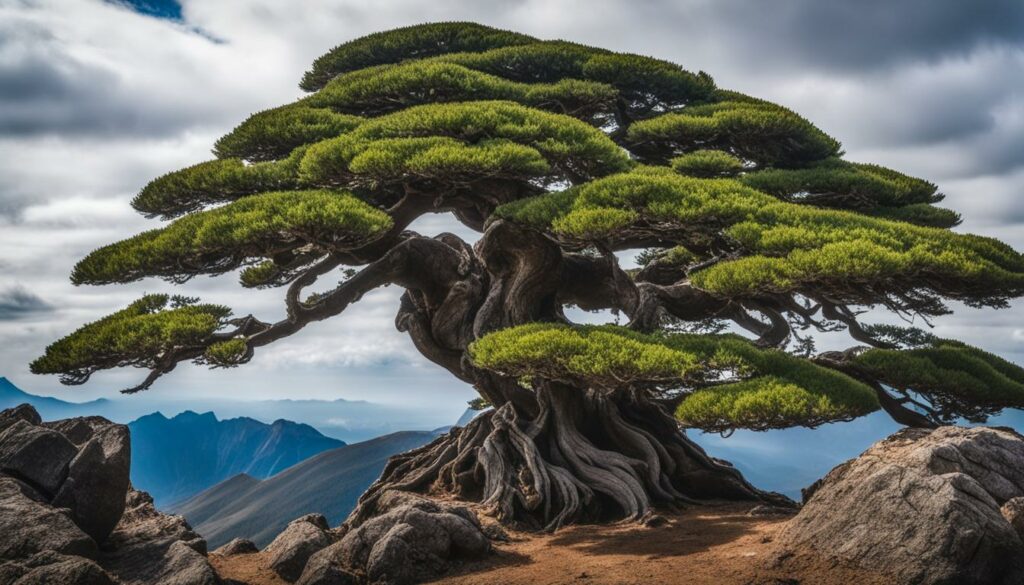
Nurturing and Training Bonsai Trees
Once you have collected your wild bonsai trees and transplanted them into appropriate containers, it’s time to begin the ongoing process of nurturing and training them. Bonsai cultivation is an art form that requires patience and dedication, but the results are truly rewarding.
One of the key elements of bonsai cultivation is pruning. Regular pruning helps to maintain the desired shape and form of your tree, ensuring that it grows in a healthy and even way. Make sure to remove any dead or damaged branches, as well as any shoots that detract from the overall appearance of the tree.
Training techniques such as wiring and clipping can also be used to shape your bonsai tree. Wiring involves wrapping a thin wire around branches and gently bending them to the desired angle, while clipping involves using clippers to remove unwanted growth. Both techniques require careful attention to avoid damaging the tree.
It’s also important to provide your bonsai tree with the appropriate amount of water and nutrients. Pay attention to the specific needs of your tree, as different species may require different amounts of water and fertilizer. In general, make sure that the soil remains moist but not overly saturated.
Overall, the process of nurturing and training your bonsai tree requires patience and skill. With dedication and attention to detail, you can create a stunning miniature tree that will bring years of enjoyment to your collection.
Challenges and Considerations
While collecting bonsai trees from nature has numerous benefits, there are also challenges and considerations to keep in mind. One of the biggest challenges is ensuring that the collected trees are healthy and suitable for bonsai cultivation. Not all wild trees are ideal for bonsai, and identifying the ones that are can be a daunting task.
In addition to selecting the right tree, you must also consider the ethics of collecting from nature. Overharvesting can have a negative impact on natural ecosystems, so it’s important to be mindful of the trees you collect and how many you take from any one location.
Another consideration is finding an appropriate location for your collected trees. Bonsai trees have specific lighting, temperature, and humidity requirements, so placing them in unsuitable conditions can cause them harm. It’s essential to research the environmental needs of your collected trees and ensure they’re placed in a suitable environment.
Finally, wild bonsai trees can be more susceptible to disease and pests than cultivated ones. It’s important to monitor your trees for any signs of illness or infestation and take swift action to prevent the spread of disease.
Remember, the health and longevity of your bonsai collection depends on proper care and attention. Take the time to research and understand the unique challenges and considerations involved in collecting and cultivating trees from nature, and you’ll be rewarded with a captivating and beautiful collection of wild bonsai.
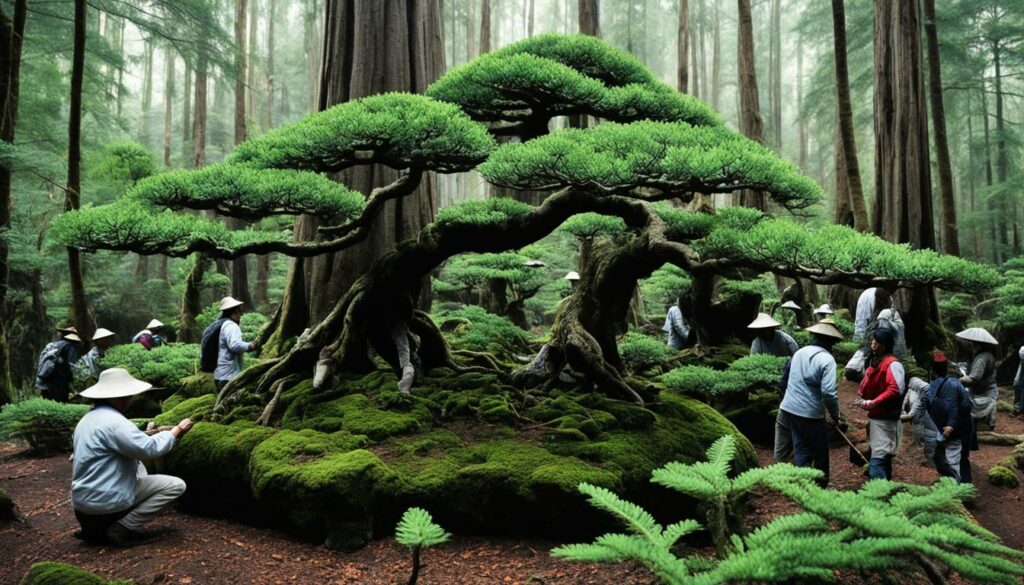
Showcasing the Beauty of Natural Bonsai
Once you have collected your natural bonsai trees, you want to showcase the unique beauty of your collection. There are different presentation styles and arrangements that can enhance the aesthetic appeal of your trees.
Your natural bonsai trees should not only be displayed for admiration but also for relaxation. They should be positioned where they can be easily viewed and appreciated, whether outdoors or indoors.
You can make your display more interesting by arranging your natural bonsai trees according to their size, style, and color. For instance, grouping small and similar-looking trees together can create a more pronounced impact than scattering them around haphazardly.
You can also experiment with different display materials such as rocks, stones, and gravel. These materials can range from large and striking to small and subtle. Arrange them according to size and color, and combine them in a way that highlights the natural beauty of your trees.
Another option is to display your natural bonsai trees in artistic containers or pots. The pots can be made of clay, cement, or ceramic; just ensure they complement the natural beauty of your trees.
Lastly, you can use different lighting techniques to highlight your trees’ unique features. Experiment with soft, warm, and colorful lighting that enhances the natural color of the leaves, bark, or trunks.
With these tips, your natural bonsai collection will not only be a scenic beauty, but it can also be therapeutic. Take some time to sit back and relax while admiring the calming and peaceful vibes that these tree collections bring.
Tips for Successful Bonsai Collecting
Collecting bonsai trees from nature can be a rewarding, yet challenging experience. To help make the most of your tree collection journey, here are some helpful tips:
- Research and plan: Before embarking on your collecting trip, research the types of trees that grow in the area and the regulations regarding collection. Plan your route and bring necessary tools and equipment.
- Respect natural habitats: When collecting trees, be sure to leave the surrounding ecosystem undisturbed. Take only what you need and avoid damaging other plants and wildlife.
- Carry out proper techniques: Use appropriate techniques such as root pruning, digging, and transplanting to minimize stress on the trees. Handle them with care and transport them safely to avoid damage.
- Acclimate collected trees: After transplanting, allow the trees to acclimate in a sheltered, shaded area. Gradually introduce them to sunlight and adjust watering frequency as needed.
- Attend bonsai workshops: Participate in workshops and classes to improve your skills and learn from experienced tree collectors. These events provide an opportunity to network with others in the bonsai community.
- Experiment with different species: Expand your collection by experimenting with different species of trees. Incorporate both wild and cultivated bonsai trees to add diversity and character to your collection.
By following these tips, you can have a successful and fulfilling experience collecting bonsai trees from nature. Remember to always respect the natural environment and appreciate the unique beauty of natural bonsai.
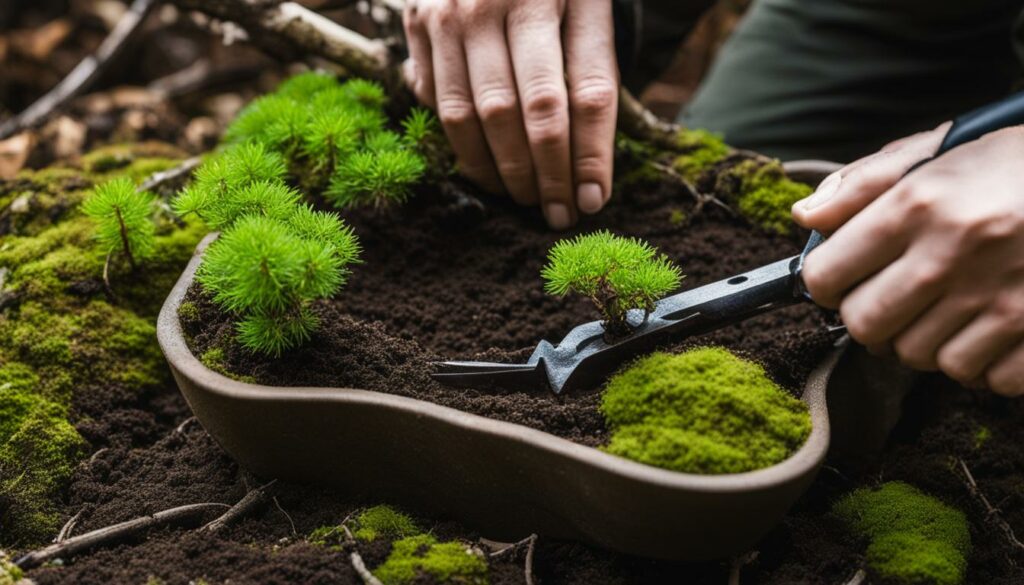
Expanding Your Bonsai Collection
Now that you have successfully collected and cultivated your first wild bonsai tree, it’s time to consider expanding your collection. Here are some strategies and ideas to help you on your journey:
Purchasing Trees
If you are looking to add more trees to your collection, purchasing bonsai trees from reputable growers can be a reliable option. Look for nurseries and online retailers offering a variety of tree species and sizes to suit your preferences. However, be sure to research the seller and read reviews before making a purchase to avoid scams or receiving unhealthy trees.
Trading Trees
Tree trading can be a great way to expand your collection and connect with other bonsai enthusiasts. Attend bonsai club meetings, workshops, and shows to find opportunities to trade trees with other collectors. Be sure to only trade healthy and well-cared-for trees to maintain the integrity of the bonsai community.
Growing from Seeds/Cuttings
If you’re looking for a more hands-on approach to expanding your collection, consider growing trees from seeds or cuttings. This allows you to have more control over the growth and development of the tree, and can be a rewarding experience. Look up techniques for propagating bonsai trees from reputable sources.
“You don’t have to travel far to discover the beauty of natural bonsai. Look right outside your window and be amazed at the wonders of nature that await you.”
Remember to be patient when building your bonsai tree collection. Take the time to research and find the best trees for your environment and skill level, and don’t be afraid to try new techniques and styles. With dedication and care, your bonsai collection can truly be a work of art.
Conclusion
Congratulations on completing your journey to learn about collecting bonsai trees from nature. Cultivating and caring for bonsai trees is a rewarding hobby that requires patience, skill, and dedication. By incorporating wild bonsai into your collection, you can add a unique and natural beauty that cannot be replicated through cultivation alone.
Remember to approach tree collection with respect and responsibility, considering the ethical implications and taking measures to preserve the natural ecosystem. Always use the proper tools and techniques to minimize stress on the trees and ensure their health and longevity.
As you continue to expand your collection, experiment with different presentation styles and arrangements to showcase the beauty of your natural bonsai. Don’t hesitate to seek advice from experienced collectors or experts to refine your techniques and overcome any challenges you may encounter.
Happy bonsai collecting!
FAQ
What is the appeal of collecting bonsai trees from nature?
Collecting bonsai trees from nature allows you to incorporate the unique beauty of wild bonsai into your collection. These trees have a natural charm and character that can’t be replicated.
What is bonsai cultivation?
Bonsai cultivation is the practice of growing and maintaining miniature trees in containers. It involves careful shaping, pruning, and training to create beautiful, natural-looking bonsai trees.
What is yamadori?
Yamadori refers to the practice of collecting bonsai trees from their natural habitat, such as mountains or forests. It requires careful consideration and adherence to ethical guidelines.
How do I select the right tree for bonsai cultivation?
When selecting a tree for bonsai, consider its characteristics, such as small leaves, interesting trunk shape, and adaptability to container cultivation. Look for trees with potential for artistic expression.
Where can I find bonsai-worthy trees in nature?
Bonsai-worthy trees can be found in various natural environments, including forests, mountains, and even urban areas. Look for places with diverse ecosystems that support the growth of healthy trees.
What are the ethics of collecting wild bonsai trees?
When collecting wild bonsai trees, it’s important to follow ethical guidelines to preserve the natural ecosystem. This includes obtaining permission, avoiding endangered species, and minimizing harm to the environment.
What tools and equipment do I need for collecting bonsai trees?
Essential tools for collecting bonsai trees include a root hook, bonsai saw, root cutters, and a collection container. It’s important to have the right equipment to handle and transport trees safely.
What techniques are used for collecting bonsai trees?
Techniques for collecting bonsai trees include root pruning, digging, and transplanting. These techniques ensure the successful extraction of trees while minimizing stress and root damage.
How do I transplant and acclimate collected trees?
After collecting a tree, it’s important to transplant it into an appropriate container and acclimate it to its new environment. This involves proper soil placement, watering, and gradual exposure to sunlight.
How do I care for and train collected bonsai trees?
Ongoing care for collected bonsai trees includes regular watering, fertilizing, and pruning. Training techniques such as wiring and branch placement are used to shape and maintain the desired form.
What challenges should I consider when collecting bonsai trees?
Challenges in collecting bonsai trees include the risk of damaging trees during extraction, proper acclimation, and the need for ongoing care and maintenance. Understanding and mitigating these challenges is crucial for success.
How can I showcase the beauty of natural bonsai trees?
Natural bonsai trees can be showcased in various ways, including display stands, accent plants, and creative arrangements. Experiment with different presentation styles to enhance their aesthetic appeal.
What are some tips for successful bonsai collecting?
Successful bonsai collecting tips include studying the species you wish to collect, learning from experienced collectors, and joining bonsai communities for guidance and support. Patience and dedication are key.
How can I expand my bonsai collection?
You can expand your bonsai collection by trading with other collectors, purchasing trees from reputable nurseries, or cultivating trees from seeds and cuttings. This allows for a diverse and growing collection.
